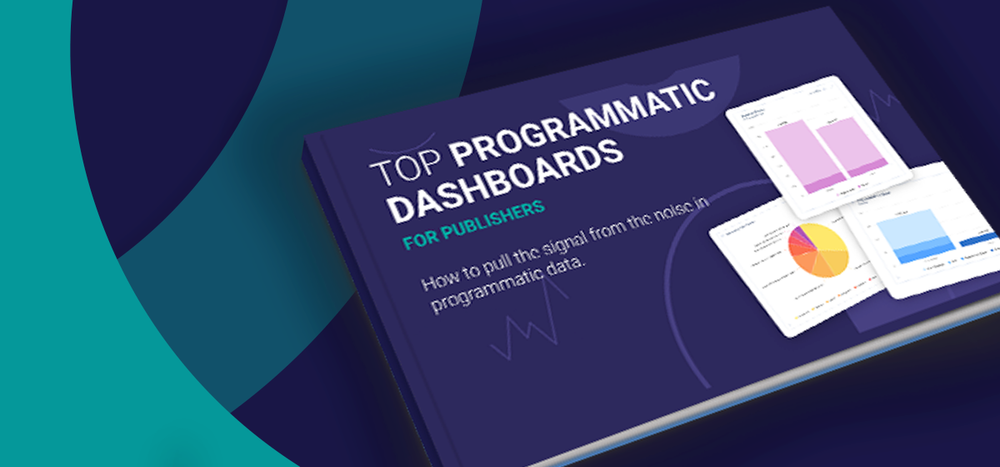Programmatic advertising has evolved and skyrocketed in growth, but the reporting ecosystem has not matured at the same pace. Challenges are fueled by a lack of standardization which has led each partner in the programmatic ad delivery chain to adopt their own conventions, naming standards, and levels of transparency and quality. So, businesses are on their own to make sense out of each vendor’s data, which is a difficult issue to tackle but one that can’t be ignored—in 2 years, programmatic digital display advertising spend is expected to top $65 billion.
As the old adage goes “if you fail to plan, plan to fail.” A common mistake many companies commit when tackling programmatic advertising is that they fail to put together an organized plan for how data and reporting will be handled. Without a formalized strategy in place, individuals pull their own reports and create multiple copies of different versions of the “same” data throughout the company. This leads to duplicate efforts and decisions being made based on different data points, which can snowball a small issue into a large problem. Below, we outline the steps you need to take to develop a strategy for managing your programmatic data.
1. Define the objectives of your programmatic business.
The broad goal for most organizations is to maximize revenue, but there are many paths toward optimization so, for a more actionable strategy, we recommend you narrow the scope. For example, if you are running programmatic yield management for a publisher, the objective could be as simple as measuring revenue, eCPM, and fill rate across your demand partners.
2. Identify the data needed in order to measure and track your objectives above.
Ask yourself, what are the main KPIs you will track to hit your targets? Total ad requests, paid impressions, monthly revenue, eCPM, fill rate, others?
Next, you’ll need to establish reporting windows. Common industry practice is to have an operational/daily view to track revenue per demand source (vs. pacing with direct contracts). This is where you’ll fix bugs and check that creative is displaying correctly.
You’ll also want a weekly or monthly report to monitor CPM and fill rates, optimize price floors, and review progress on any changes made to the campaign. This is also a good opportunity to monitor advertiser buying trends for direct-sold deals.
Additionally, you may elect to monitor a longer-term window to analyze partner performance (for modifying your mix) and to decide which tech trends to adopt. Be aware that partners don’t all provide the same metrics, so you’ll need to consider what data is available from each source. For example, Amazon TAM doesn’t offer advertiser or DSP fields and Google does not offer EBDA reporting through their API; therefore, reporting capability should be considered when choosing your demand partners.
3. Define how data will be obtained, aggregated, cleaned, and organized and who will be responsible for the development and ongoing maintenance of the reporting platform.
This step is especially important to ensure that everyone is looking at the same data and that someone will manage the setup if anything changes (it will). A publisher typically has 3 options:
- Manually pull reports from the various partner UIs then clean, transform, and aggregate the data
- Build out APIs to perform the pulls from the various partners
- Use a reporting and analytics solution like Ad-Juster’s ProgrammaticIQ that handles data collection, aggregation, and transformation
Warning: data management and collection is not a set-it-and-forget-it activity. Vendors regularly update their APIs and UIs, they make changes to columns and fields offered, and, because programmatic is still in its infancy, this won’t change in the foreseeable future. If building in-house, industry best practice dictates that full-time resources be dedicated to maintenance and support for the life of the platform. We discuss “Buy vs. Build” in the digital advertising industry here.
4. Identify the key stakeholders for your reports and how the data will be disbursed to them.
For example, if you are creating manual excel reports, how often will reports will be generated and who will be on the distribution list? If you are using an analytics platform like Ad-Juster ProgrammaticIQ, who will need access to the platform and who will receive automated reports or dashboards? Different roles in an organization will require varying levels of granularity in their reports. Operations will want excel reports with the most detailed data while supervisors and executives will want higher-level dashboards and visualizations that track overall business performance.
5. Implement strategy and validate with stakeholders.
Review reports and dashboards to ensure the data presented is complete, accurate, and aligns with each stakeholder’s objective(s). This review should include getting into the weeds to normalize advertiser names across your vendor systems and to check that you’ve correctly mapped columns. Quality solutions, like Ad-Juster’s ProgrammaticIQ, take care of this for you; while the alternative is to maintain a mapping file across each of your vendors and update it periodically because new advertisers are continuously coming on board.
Additionally, you’ll need to establish ownership and resources for ongoing maintenance because you’ll have to repeat the steps above each time the industry or your business changes. As discussed above, will this remain in-house or be trusted to an ad tech vendor, like Ad-Juster’s ProgrammaticIQ solution?
--
Programmatic advertising promises to be a great tool for publishers but requires a well thought-out approach to data management before the benefits, and especially additional revenue, can be realized. If you have any questions about data reporting or our ProgrammaticIQ platform, don’t hesitate to contact us.






